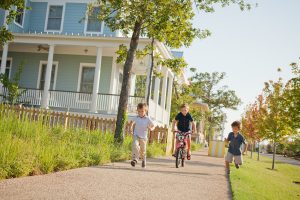 As our population ages, it is more important than ever to adapt our communities to make them more livable and supportive for those who wish to remain independent in their own homes. A Supportive Living Module is a sprawl repair technique that can be inserted into a traditional cul-de-sac to facilitate aging in place within one’s home community.
As our population ages, it is more important than ever to adapt our communities to make them more livable and supportive for those who wish to remain independent in their own homes. A Supportive Living Module is a sprawl repair technique that can be inserted into a traditional cul-de-sac to facilitate aging in place within one’s home community.
Mimi Kirk’s story highlights the need for complete, supportive communities:
“Welltower, a company that owns health-care real estate, from retirement communities to outpatient medical office buildings, recently surveyed 3,000 people to find out more about this desire among urbanites to age in place. Respondents were of various ages—Baby Boomers, Generation X, and Millennials—and lived in 10 cities across the country, from Seattle to Houston to Boston. One Canadian city—Toronto—was also included.
The survey showed that 7 out of 10 urbanites still want to live in their city after the age of 80. For Boomers, the share was higher, at 8 out of 10. The result was fairly uniform across the cities. The survey also revealed that all generations are thinking of their 80-plus lives as active ones.”
“Across the country, people are getting older, living longer, and staying in their communities.”

